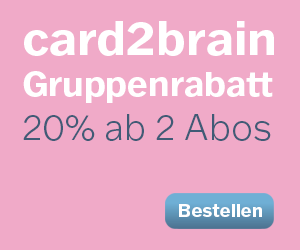ACCA Financial Management
ACCA Financial Management
ACCA Financial Management
Kartei Details
| Karten | 157 |
|---|---|
| Sprache | Deutsch |
| Kategorie | Finanzen |
| Stufe | Andere |
| Erstellt / Aktualisiert | 25.08.2025 / 25.08.2025 |
| Weblink |
https://card2brain.ch/cards/20250825_acca_financial_management
|
| Einbinden |
<iframe src="https://card2brain.ch/box/20250825_acca_financial_management/embed" width="780" height="150" scrolling="no" frameborder="0"></iframe>
|
Gross profit margin
Gross Profit / Sales * 100
Operating Profit Margin
Operating Profit (EBIT) / Sales * 100
ROCE
Operating Profit (EBIT) / Capital Employed * 100
Capital Employed = Total assets - ST liabilities
Operating profit margin × asset turnover
ROE
Net Income - preference div / Shareholder funds * 100
If preference div. are classified as liabilities, they do not need to be deducted since it is already included in finance costs
Current Ratio
Current Assets / Current Liabilities
Quick Ratio
Current Assets - Inventory / Current Liabilities
Receivables collection period
= Av. accounts receivable / Credit sales * 365
Payables payment period
average acc. payable / credit purchases * 365
Inventory holding Period
Average Inventory / Cost of Sales * 365
Operating Cycle
= Inventory holding Period + Receivables collection period - Payables payment period
Asset turnover
Sales / Capital Employed
Sales / Working Capital
Sales / Working Capital
Debt to Equity Ratio
Non-current Liabilities / Equity + Reserves
>100% = highly geared
Debt to total capital
non-current liabilities / Capital employed
Capital employed = total capital -> >50% = highly geared
Operational gearing
Fixed Operating Costs / Variable Operating Costs
Fixed Operating Costs / Total Costs
Contribution / Operating Profit
-> Contribution = Revenue - VK
In cases where a business has high fixed costs as a proportion of its total costs, the business is deemed to have a high level of operational gearing.
Potentially this could cause the business problems in as it relies on continuing demand to stay afloat.
If there is a fall in demand, the proportion of fixed costs to revenue becomes even greater. It may turn profits into serious losses.
Normally, businesses cannot themselves do a great deal about the operational gearing, as it may be typical and necessary in the industry, such as the airline business
EPS
Profit of the year attributable to ordinary shareholder / weighted average nr. of outstanding shares
= Net Profit - Pref. dividends (if not liabilities) / weighted average nr. of outstanding shares
- based on past data
- impacted by accounting policy choices
- liable to manipulation for bonuses
Diluted EPS
Net Profit (- pref div. ) + DPS adjustments / weighted average nr. of shares outstanding
potentially dilutive securities (PDSs). These are securities in issue that have an obligation to issue shares in the future (e.g. convertible debt or share options).
Price/Earnings Ratio
Ordinary share price (ex div) / EPS
- Driven by the market price of a share and the earning capacity of that share.
- If the EPS goes up or down, the share price is also expected to go up or down, so the new share price will be the new EPS multiplied by the constant P/E ratio.
Dividend coverage
Net Profit - pref div. / Ordinary Dividends
Dividend payout ratio
Ordinary dividend / Net profit - pref. dividends
Dividend yield
Dividend per ordinary share / Ordinary Share price
Earnings yield
EPS/Ordinary Shareprice
Total Shareholder Return
Share Price 1 - Share price 0 + Dividends for the year / Share price 0
0 = at start of year
1 = end of year
What is Macroeconomic Policy?
setting of economic objectives by the government (full employment, economic growth etc) and the use of control instruments to achieve those (fiscal/monetary policy)
Monetary Policy
actions taken by the government or central bank to achieve economic objectives with monetary instruments like:
- controlling the amount of money in circulation
- attemptin to reduce the amount of money through price (IR)
This can be directly (e.g. sale of government securities) or indirectly (through Interest rates) controlled
Fiscal Policy
Government actions to achieve economic objectives through the fiscal instruments of taxation, public spending and budget deficit or surplus.
(keynesian approach)
Fiscal & Monetary policies are interdependent!
Supply-side policies
policies which focus on creating the right conditions in which private enterpise can grow and raise the capacity of the economy to provide the output demanded
Floating exchange rate
Currency's value is allowed to move freely with supply & demand market forces
Fixed exchange rate (peg)
ER is kept fixed against that of another currency - no fluctuations
Crawling peg
Fluctuation allowed within a certain range
Consumer Price Index
Average change overt ime in the prices paid by consumers for a market basket of consumer goods/Services
Demand-pull inflation
Inflation arises due to demand>max output of the economy with full employment
Cost-push inflation
Inflation rises due to increases in cost of raw materials & labour
Primary financial market
selling new securities to raise new funds
Secondary financial market
trading existing securities
What is included in the financial market?
- Monetary market (ST finance (debt) for current-assets)
- Capital markets ( LT finance (debt, equity) for non-current assets but also current assets)
Bull
Investor believes that prices will rise
Bear
Investor believes that prices will fall
efficient market
the market price of all securities traded reflects all the available information
perfect market
responds immediately to the information made available to it















